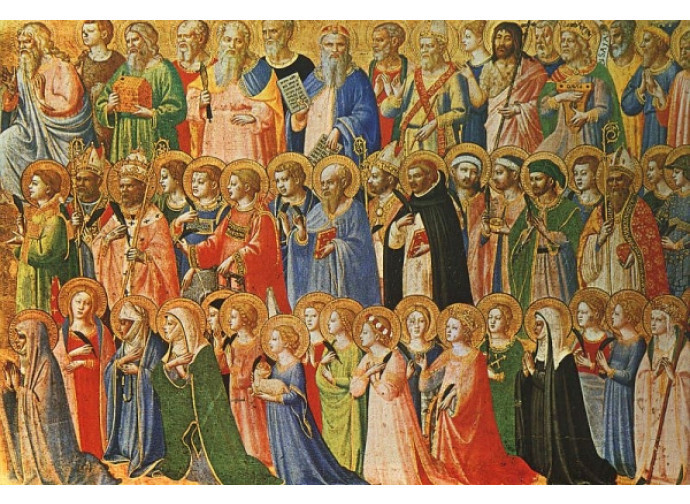All Saints
Today the Church celebrates the solemnity of All Saints, including those not canonised and whose names we do not know, “united in Christ in glory”, as the Roman Martyrology recalls.

Today the Church celebrates the solemnity of All Saints, including those not canonised and whose names we do not know, “united in Christ in glory”, as the Roman Martyrology recalls. On this feast day, “to be kept perpetually and solemnly, the Church, still a pilgrim on earth, venerates the memory of those in whose company heaven exults, to be encouraged by their example, gladdened by their protection and crowned by their victory before the divine majesty in eternal centuries”. This multitude of saints whom we venerate, in honour of the witness they have given over the centuries to Christ Crucified and Risen, are a foretaste of the glory of the heavenly Jerusalem and a firm hope for those who will die in God's grace.
Quoting Lumen Gentium, the Catechism dwells on communion with the saints, which “unites us to Christ, from whom, as from the source and from the head, all the grace and all the life of God's own people emanates” (CCC 957). From the communion between the triumphant Church in heaven and the militant Church, pilgrim on earth, comes the certainty that the saints continue to care for us from heaven, even more effectively than they already did on earth. In the economy of salvation it is therefore important to pray to them: “Their intercession - the Catechism always teaches us - is the highest service they render to God's plan. We can and must pray to them to intercede for us and for the whole world” (CCC 2683).
This holy day of obligation therefore carries a luminous teaching, which should be passed on to generations in all its saving power, especially in this age when the anti-Christian significance assumed - at least in recent times - by Halloween is being minimised.
The feast of All Saints originated in the very early centuries of Christianity and the custom of the faithful to commemorate the death of martyrs in the places of their martyrdom. At least in the 4th century, as we learn from a text by St Basil (c. 329-379), the custom had already been established between neighbouring dioceses to exchange the relics of the martyrs and to share the feast days. With the persecutions of Diocletian (244-313), moreover, their number had increased to such an extent that the days of the year were no longer sufficient to commemorate them on separate dates. thus in the East the idea of a general liturgical memorial was born, which was celebrated on the first Sunday after Pentecost or on 13 May (the oldest substantiations concern Edessa and Antioch). The two dates also spread in the West (on 13 May 609, in particular, the Pantheon in Rome was transformed into a Christian basilica and dedicated to Our Lady with the name of Sancta Maria ad Martyres), until in 835 Gregory IV moved the celebration definitively to 1 November.


